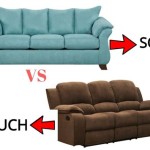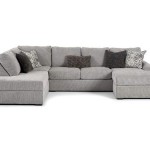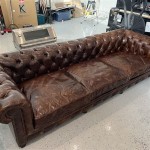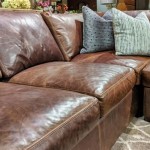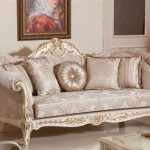DIY Bed Into Sofa Ideas: Transforming Comfortable Sleep into Stylish Seating
The concept of a bed that transforms into a sofa offers numerous benefits, particularly in spaces with limited square footage. This dual-purpose furniture can maximize functionality, converting a bedroom into a living room or a guest room into a home office with relative ease. Creating this adaptable furnishing through DIY projects offers a cost-effective and personalized solution. Careful planning, selection of materials, and execution of construction are crucial for a successful transformation.
Several approaches can be taken when converting a bed into a sofa. The chosen method will depend on factors such as the existing bed’s construction, the desired style of the sofa, and the skills and resources available to the individual undertaking the project. This article will explore several strategies for DIY bed-to-sofa conversions, focusing on practicality and achievable results.
Re-purposing a Daybed: A Straightforward Solution
A daybed, by its very nature, is already designed to function partially as a sofa. Often featuring a back and sides, a daybed requires minimal modification to fully transition into a comfortable seating area. The primary focus is usually on enhancing the aesthetic appeal and adding comfort supportive for prolonged sitting. This approach is one of the simplest DIY options.
The first step involves assessing the existing daybed frame. Examine its structural integrity and determine if any repairs are necessary. Loose joints should be tightened, and any damaged areas should be reinforced. The goal is to ensure the frame can withstand the added stress of regular seating.
Next, consider the mattress. A standard mattress may be too thick for comfortable sofa seating. If this is the case, consider replacing it with a thinner, firmer foam mattress. Alternatively, a mattress topper can be used to modify the feel of the mattress without completely replacing it. Focus on selecting a material that provides adequate support and prevents excessive sinking.
Adding cushions and pillows is crucial for transforming a daybed into a sofa. Opt for a variety of sizes and shapes to create a visually appealing and comfortable seating arrangement. Consider incorporating back cushions, bolster pillows for armrests, and decorative throw pillows for added style. The fabric choice for these cushions can greatly influence the overall aesthetic, so select materials that complement the room's decor.
Finally, enhancing the frame's appearance can significantly elevate the daybed's transformation. Painting or staining the frame can refresh its look and coordinate it with the surrounding decor. Adding trim or decorative elements can also contribute to a more polished and sophisticated appearance. The key is to create a visually appealing piece of furniture that blends seamlessly with the existing interior design.
Building a Folding Bed Frame: Maximizing Space Efficiency
A folding bed frame offers a more significant transformation, essentially concealing the bed when it is not in use and converting it into a sofa. This approach requires more advanced woodworking skills and a greater investment in materials, but the result is a highly functional and space-saving piece of furniture.
The first step is to design the folding mechanism. There are various designs available, ranging from simple hinged frames to more complex mechanisms that allow the bed to fold completely into a cabinet. Research different designs and choose one that aligns with skill level and available resources. Careful planning and accurate measurements are essential for a successful folding mechanism.
Constructing the frame involves precise cutting and assembly of wood. Use high-quality lumber that is strong and durable enough to support the weight of the mattress and any occupants. Ensure all joints are securely fastened and reinforced to prevent wobbling or instability. The frame should be designed to accommodate the chosen folding mechanism and allow for smooth and effortless operation.
Integrating the mattress is crucial for the overall comfort and functionality of the folding bed-sofa. Securely attach the mattress to the frame using straps or other fasteners to prevent it from shifting during use. Consider using a thinner, more flexible mattress to facilitate easier folding and unfolding. The mattress should provide adequate support for both sleeping and sitting.
Upholstering the sofa is the final step in transforming the folding bed frame into a functional sofa. This involves covering the frame with fabric and adding padding for comfort. Choose a durable and stain-resistant fabric that can withstand regular use. Pay attention to the details, such as stitching and seam placement, to ensure a professional and polished finish. Consider adding armrests and back cushions to enhance the comfort and aesthetic appeal of the sofa.
Upcycling a Headboard and Footboard: Creating a Rustic Sofa
Repurposing a headboard and footboard from an old bed offers a unique and sustainable approach to creating a rustic-style sofa. This method allows for creative expression and the utilization of existing materials, minimizing waste and adding character to the furniture. This project is best suited for those who appreciate a vintage or repurposed aesthetic.
The first step is to carefully disassemble the bed frame, salvaging the headboard and footboard. Clean and prepare the wood by sanding it down to remove any existing finish or imperfections. Consider applying a new stain or paint to match the desired aesthetic. The goal is to create a clean and presentable foundation for the sofa.
Building the sofa frame involves constructing a sturdy base to connect the headboard and footboard. Use lumber to create side supports and a back panel. Ensure the frame is level and stable to prevent wobbling or instability. The frame should be designed to accommodate the desired seat height and depth.
Adding a seat is essential for transforming the frame into a functional sofa. Use plywood or other suitable material to create a solid base for the seat. Consider adding padding or foam to enhance comfort. Upholster the seat with fabric that complements the headboard and footboard. Securely attach the seat to the frame using screws or other fasteners.
Incorporating cushions and pillows is crucial for completing the sofa. Choose cushions that are appropriately sized and shaped to fit the frame. Consider using a variety of fabrics and textures to add visual interest. Add throw pillows for extra comfort and style. The overall aesthetic should be cohesive and reflect the desired rustic or vintage style.
The selection of materials plays a critical role in the success of any DIY bed-to-sofa project. Consider factors such as durability, comfort, and aesthetic appeal when choosing materials. Wood should be strong and sturdy, fabric should be durable and stain-resistant, and cushioning materials should provide adequate support. Cost is also a factor to consider, but prioritize quality and longevity over short-term savings.
Prior to starting any DIY project, thoroughly research the chosen method and gather all necessary tools and materials. Create a detailed plan outlining the steps involved and any potential challenges. Ensure that all measurements are accurate and that all cuts are precise. Take safety precautions by wearing appropriate protective gear, such as safety glasses and gloves. Rushing through the project can lead to mistakes and potentially compromise the overall quality and safety of the finished product. Patience and attention to detail are crucial for a successful DIY bed-to-sofa conversion.
Modifying an existing bed into a sofa involves a series of trade-offs. The primary benefit is the dual-functionality achieved, optimizing space utilization. This is particularly beneficial in smaller apartments, studios, or multi-purpose rooms where space is at a premium. The transformation offers a cost-effective solution compared to purchasing separate pieces of furniture.
However, the primary drawbacks involve the potential compromise of sleeping comfort. A mattress optimized for sitting may not provide the same level of support and comfort as a dedicated sleeping mattress. The aesthetic appeal of the transformed sofa may also be limited by the constraints of the original bed frame. The resulting sofa may not perfectly mimic the style and comfort of a professionally designed sofa.
Furthermore, the structural integrity of the modified bed-sofa is crucial. Improper construction or the use of substandard materials can compromise the safety and durability of the furniture. The folding mechanisms, hinges, and fasteners must be robust enough to withstand repeated use and loading. Regular maintenance and inspection are necessary to ensure the continued safety and functionality of the converted furniture.
Ultimately, the decision to undertake a DIY bed-to-sofa project requires careful consideration of individual needs, skills, and resources. If space optimization and cost savings are paramount, and the potential compromises are acceptable, then a DIY conversion can be a viable solution. However, if sleeping comfort and aesthetic perfection are the primary concerns, then investing in separate, purpose-built furniture may be a more suitable option.

Diy Lounge Sofa Guest Bed Zevy Joy

27 Ways To Rethink Your Bed

Diy Sofa Bed Turn This Into A

Twin Sized Upholstered Slip Covered Daybed Project Completed

Diy Sleeper Sofa Guest Bed In The Living Room

The Couch

Sofa Style Daybeds Nesting Place

Diy Daybed Guest Room Tour Sugar Cloth
How To Make Sofas Diy Quora

How To Build A Pallet Daybed Pretty Prudent
Related Posts

